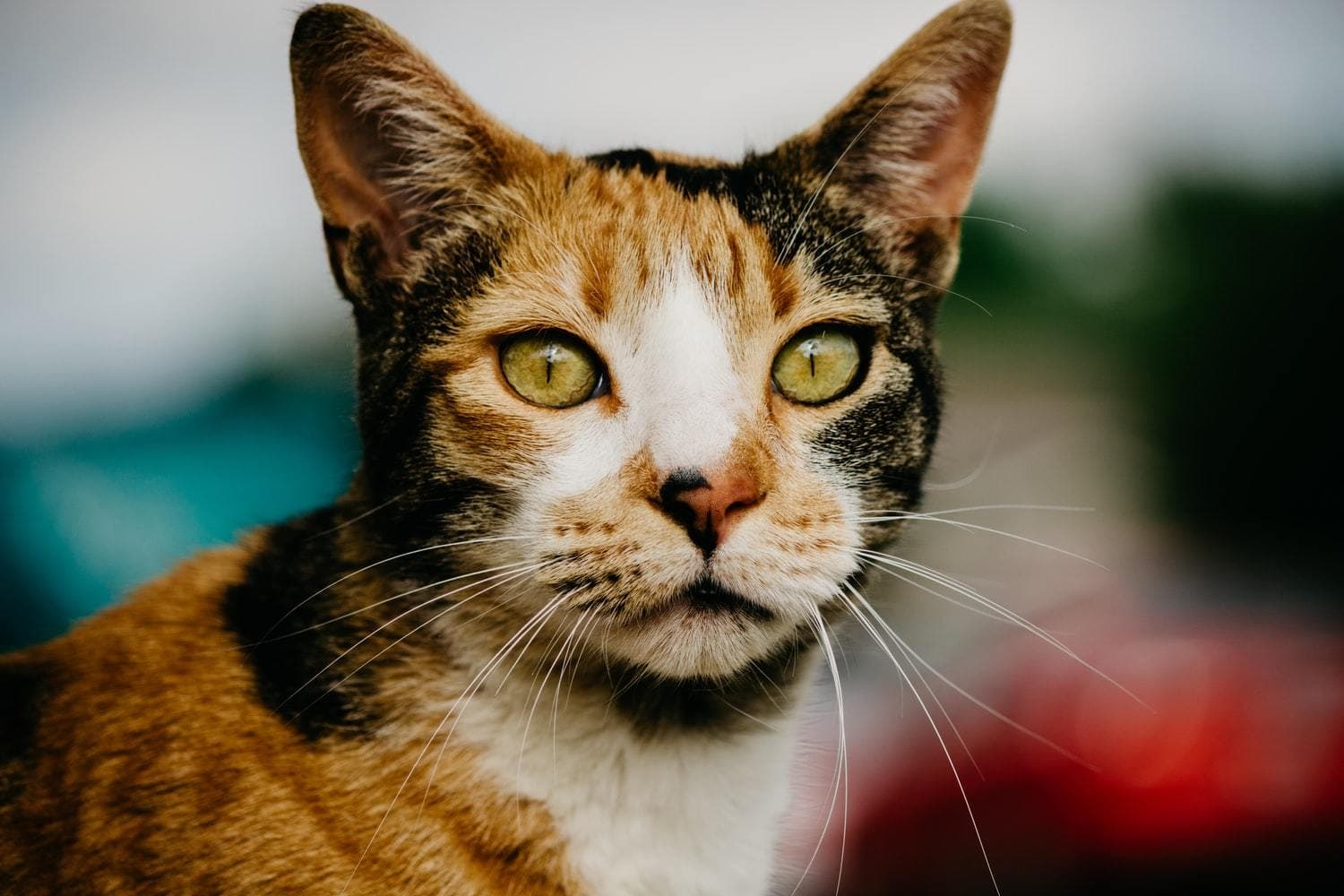Do you have a kitty that has very special eyes? Have you ever been mesmerized by your kitties eyes? Well, this is just the article for you! Here we briefly cover the science and genetics of cat eye colors.
How do cats get their eye color?
Eye pigment is produced by pigment-producing cells called melanocytes, which are present in the iris. The exact color and its intensity will depend on the number and activity of melanocytes in the iris. If there are no melanocytes, the eye will be blue. A low abundance of melanocytes results in green coloration, and a high abundance of melanocytes creates an orange color. If the melanocytes are less active, the intensity of the given color will be lighter and vice versa. Therefore, eyes with a high number of melanocytes (orange) can range from amber (less active melanocytes) to strong copper (active melanocytes).
The activity of melanocytes is genetically determined. Multiple genes in different chromosome locations are in control of the iris pigmentation.

Blue eyes
The blue eyes virtually have no pigment, actually. The iris of blue-eyed cats doesn't carry a lot of pigment, and the "blue color" in their eyes is the result of the level of refraction and not melanocytes. The level of refraction determines how blue your cat's eyes will appear. This means your beautiful Siamese, with those mesmerizing deep blue eyes, actually has low levels of pigment in their eyes, but high refraction which creates the perception of blue color, when in fact, the iris is essentially colorless.
All kittens are born with baby blues
Kittens are similar to human babies - most are born with essentially no pigment in their iris. This means that neonatal kittens will all have blue eyes. However, as they begin to age, their individual breed genetics will take over. This means that by 6 to 7 weeks of age your cats eyes will change color as their melanocytes begin to migrate to the iris, mature and produce melanin.
Is coat color associated with the eye color?
The genetic link between eye color and coat color is actually minimal. In general, only blue eyes have an association with a specific coat type or color. The most well-known example seen in cats is the white coat/blue-eye association. You’ve probably seen yourself that cats with white coats tend to have blue eyes and that the majority of these white-haired fur babies tend to be deaf. This is because the gene that codes for white fur coats will essentially mask all other eye colors like amber, hazel, green.
Blue eyes in Siamese cats
The blue colors of a Siamese are a curious case. Siamese, Burmese, Birman, Himalayan, and Tonkinese cats are all characterized by color-pointed coat. This coat pattern is a result of a form of temperature-sensitive albinism caused by a mutation in tyrosinase (enzyme involved in the production of melanin). The mutated version of this enzyme is heat-sensitive, and it fails to work at normal body temperatures. It activates only in cooler areas of the skin (lower than 33 °C). Therefore, the coolest parts of the body will be pigmented darker than the rest, such as extremities and faces. These pigmented points can be very dark in color, almost black, or cool grey, light brown, or lilac. This same albinism actually affects eyes, which is why color-pointed cats have blue eyes.
Heterochromia: odd-eyes in cats
During development, stem cells are migrating to a different part of the body where they differentiate into specialized types of cells. Some of these stem cells migrate through the embryo and stop in the eye, where they become melanocytes. In certain conditions, melanocytes are prevented from reaching one of the eyes. This results in one eye having melanocytes which will give it its pigmentation (green, amber, or brown), while the other eye will remain blue due to the lack of melanin.
Cats are captivating and wonderful. We would all love to see what the world looks like through the eyes of our little friends, but today, we have to settle for just a little bit of science behind the secretive ways of feline eyes!
Are you curious about your cat’s genetic background and health? Get to know your cat, from teeth to tail with a Basepaws Cat DNA test.



